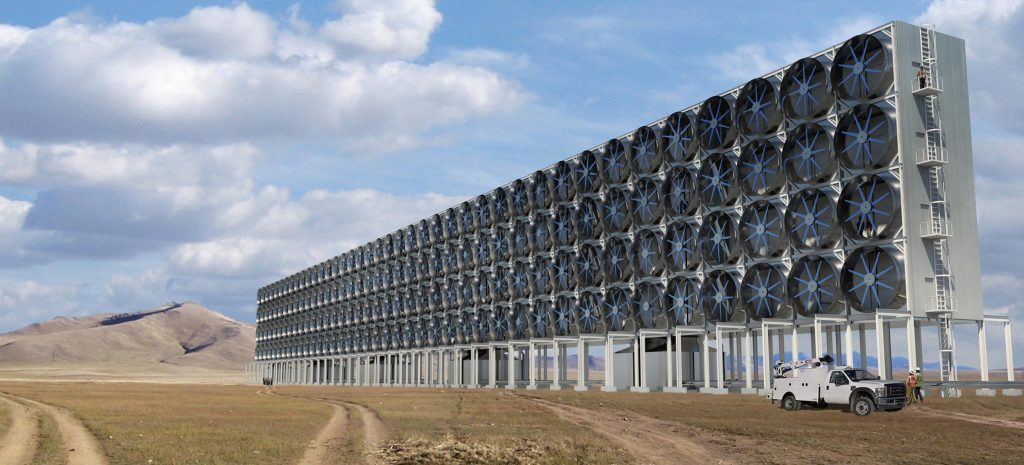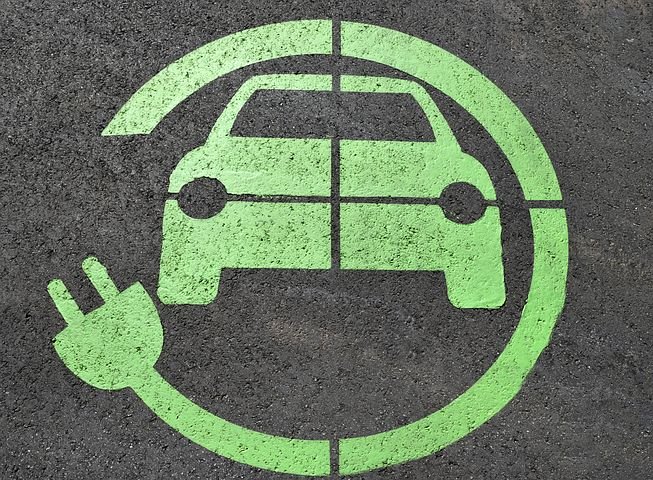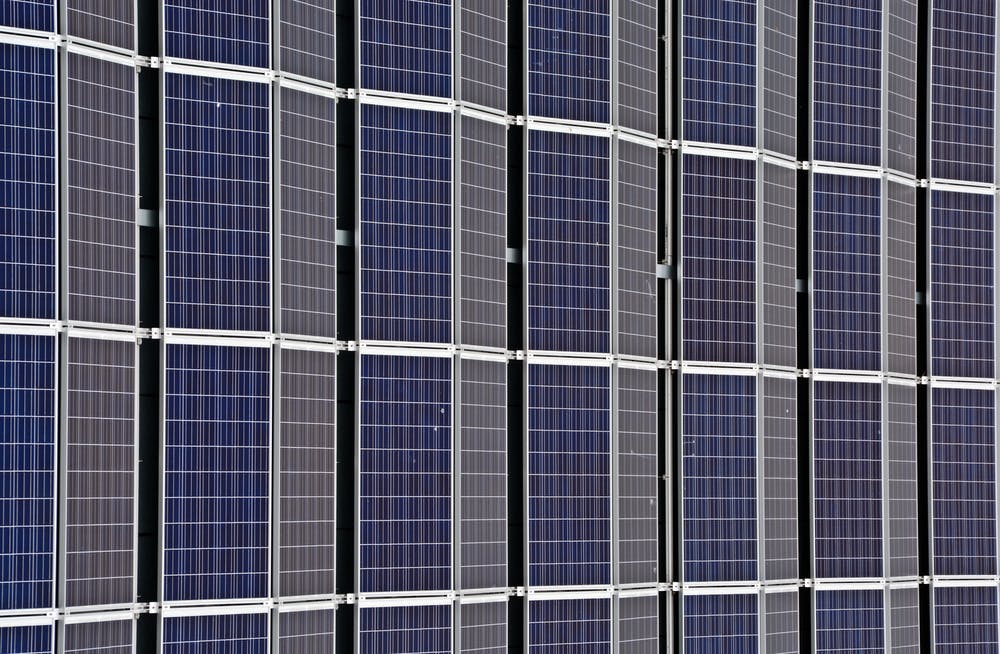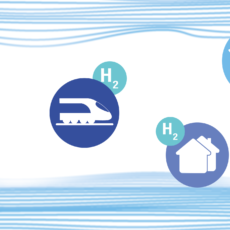
After doing a global geography-based review of what certain countries are doing to progress the move to a more sustainable future with renewable energy and a decarbonized infrastructure, I wanted to follow up by focusing on some of the biggest businesses around the world and uncover their moves.
There is no shortage of companies who are suddenly using phrases like carbon neutral, net zero, climate positive, and carbon negative in their marketing and communications. But how much of that is buzz and how much is backed by action? As consumers, we have to get smarter. We have to understand that simply throwing a ‘green’ or ‘eco’ phrase onto some packaging does not make the product, nor the company, an environmental or sustainability warrior. We have to dig deeper than that, to look beneath the words to see that there’s substance. And happily I can tell you that there are plenty of companies who aren’t just paying the climate lip service — 23% of Fortune 500 companies have actual, robust and ambitious climate goals. This is largely due to the fact that we, the consumer, ARE digging deeper, and ARE expecting more from the companies we hand over our cash to. Great work, swrmers!
So I’ve got the ball rolling for you, and have laid out a few companies who say they are doing good things and are actually doing them. We’d love to hear from you if you have knowledge of others who are making good on climate promises!
Microsoft
The tech giant is not new to making climate change related commitments. In 2012 they announced that they would work towards being ‘carbon neutral’, and they achieved it through investment in carbon offsets. But Microsoft says “Neutral is not enough to address the world’s needs”. So now their plan is to be carbon negative by 2030, with a further stretch to remove all the carbon emissions they’ve emitted since launching in 1975. There are some very impressive parts to this plan, like moving to 100% renewable energy by 2025 for all data centers, buildings and campuses (they’ll completely move to electric vehicles on all their campuses as part of this); and they will introduce an internal ‘carbon tax’ of $15/metric ton of CO2 payable by the division who makes the emissions and being spent only on sustainability efforts.
The most forward thinking part of their announcement is the investment of $1 billion over the next 4 years specifically to find and commercialise carbon removal technologies. There has already been much work in this space, to find a way to augment and fast forward the carbon sequestration work being carried out by trees, soil, geology and the oceans. These natural elements simply can’t work quickly enough to remove carbon before we continue emitting it. One Direct Air Capture (DAC) company which we reported on late last year (and pictured below) is Canadian firm Carbon Engineering (who can boast Microsoft Founder Bill Gates as an investor), and one of their industrial units is capable of removing 1 million tons of CO2 per year…which they state is equivalent to about 40 million trees.

Something which I found interesting is that there are 9 companies, of which Microsoft is one, who have formed an alliance working with the non-profit Environmental Defense Fund called Transform to Net Zero. The 8 other global companies are NIKE, Inc, Danone, Wipro, Unilever, Starbucks, Mercedes-Benz AG, Natura &Co (parent company to The Body Shop, Aesop and Avon) and AP. Moller-Maersk. Microsoft, nor any of these other corporations mention Transform the Net Zero on their own websites or in publications about their sustainability and carbon emissions commitments. But as Microsoft President Brad Smith said, “No one company can address the climate crisis alone.”
The thing which impressed me about Microsoft’s plans and schedule was their transparency. They have documented in great detail each small step they will take to facilitate their bold desired outcome. It’s for this reason that I’ve singled them out of this Transform to Net Zero group to highlight their agenda.
Apple
Another tech giant has recently announced similar plans, but in this case it’s for all their products (and hence supply chain) to be carbon neutral by 2030. The company themselves are already there, after having transitioned to 100% renewable energy at all retail stores, offices and data centers. But, this accounts for only 2% of the company’s overall emissions. So tackling the remaining 98% from product and supply chain is incredibly important, but is not going to be easy. They will focus on reducing 75% of the supply chain emissions through working closely with partners and suppliers, and more than 70 of their suppliers have committed to 100% renewable energy use. Of the 25.1 million metric tons of CO2 released in 2019 from their total operations, 76% of it stems directly from product manufacturing. The remaining 25% of their supply chain emissions will be taken care of through removal of the CO2 (note, this is in the form of offsetting, not tech to physically remove what’s already in the atmosphere).

The aim is that every single Apple product sold from 2030 onwards will have zero climate impact. The end product itself will also have a part to play in overall supply chain reduction of emissions, through the introduction of recycled metal components. Apple states that the use of 100% recycled aluminum for the enclosure of the new Mac Mini and MacBook Air has cut the carbon footprint of these products nearly in half. They also plan to completely eliminate plastic from their packaging by 2025, and eliminate landfill waste form their suppliers. And the final environmental pledge is to remove all harmful chemicals from their products and be 100% transparent about any chemicals used.
I applaud these bold aims. I won’t take anything away from them that they’re doing the right thing here. However, I do feel that as consumers we are responsible to start being more conscious of purchases. Apple, nor indeed any other tech gadget manufacturer, will not stop producing new shiny objects to appeal to our ego, so we just must be more mindful with our purchases. The elephant in the room of this positive climate talk is the e-waste at the end of it (or when we choose to upgrade for the sole purpose of upgrading).
Procter & Gamble
Not to be outdone by tech companies, this household name in personal care are stepping up in a big way too. They have announced that they will source their energy from 100% renewable sources and will cut emissions by 50% at every one of their sites. Reducing their carbon footprint is a major goal so they have partnered with WWF and Conservation International to fund protection and restoration of a range of carbon sequestration areas such as forests and wetlands. But P & G are also focusing on other aspects of environmental care. They have 4 elements to their “Ambition 2030” sustainability goals: Brands, Supply Chain, Society and Employees.

Packaging, for obvious reasons, is a great place to try to make improvements, and fits into the Brands category mentioned above. Such as entering a test program with TerraCycle’s Loop reusable package system, which is where TerraCycle takes back empty packages from customers, cleans and refills them for another use. Also on packaging, they have committed to reducing the use of virgin petroleum plastics by a whopping 50%, removing about 30,000 tons of the stuff from use. In addition, they will use only 100% recyclable or reusable packaging by 2030.
One of the most exciting and forward thinking areas of their sustainability goals is that they are working with very novel technology in Italy whereby used disposable diapers are actually being recycled, and it can be applied to any absorbent hygiene product!
I also love the ways they are engaging with their employees to drive those individuals to have a more positive environmental impact, in addition to improving their impact on the company’s sustainability business plans. They recognise education as playing an important role for motivating change, rather than simply bringing in regulations.
IKEA
The Swedish furniture and household goods giant is making serious climate moves. In November of last year, they pledged €100 million to be spent on offsetting projects which remove carbon from the air through reforestation, and a further €100 million to encourage all their suppliers to move towards renewable energies. The reason this aspect is so important is that IKEA only manufacturer about 10% of their products themselves. And when the goal is to be ‘climate positive’ by 2030 (reducing more carbon from their value chain than they are responsible for emitting) working with suppliers is extremely integral to achieving that.
They’ve gone into lots of detail in their plan (I’m a fan of detail. It’s harder to hide behind empty statements), calculating not only the total emissions for FY19 (24.9 million tones CO2e), but also the emissions from each of 8 areas of the value chain, from raw materials to end of life of the product. The materials right at the start, unsurprisingly, are far and away the biggest contributor to emissions (42%), so is an area of focus for reductions. This takes the form of using only renewable or recycled materials by 2030, such as ensuring certification by independent authority the Forest Stewardship Council (FSC) and developing a bio-based glue for boards. They are also aiming for 100% renewable energy supply by 2025, running completely electric delivery vehicles and developing biofuels for shipping.

It’s not only flat packs (and dare I say, the odd frustration over an uncooperative Allen key) which are synonymous with IKEA. So, too, are their Swedish meatballs. But the problem with those is the meat. So they carry a high carbon footprint — all one billion of them sold every year. So a few years back IKEA introduced a veggie ball, which was a huge step forward for climate action. But they’ve just unveiled a brand new plant based meatball, because they were aware that customers wanted to ditch the meat but not forego the famous flavor and texture. These new plant balls, called the HUVUDROLL, have less than 4% of the traditional meatball’s carbon footprint. Meat free is nothing new to IKEA. After the veggie ball was a success, they launched a meat free hotdog (selling more than 10 million in its first year of 2018), and a vegan soft serve ice cream.
With the changes IKEA have made thus far, 2019 saw carbon emissions drop 4.3%, even despite rising sales.
Walmart
This company is not new to having sustainability goals. Back in 2005 in the wake of Hurricane Katrina, they started tracking their carbon emissions and were looking for ways to be more environmentally friendly and use renewable energy, way before the term ‘sustainability’ was cool. And since then, they’ve only upped the ante. In 2017 they launched ‘Project Gigaton‘, with a goal of reducing 1 gigaton of carbon from their supply chain by 2030. The areas which suppliers can focus on to contribute to that huge reduction are: Energy, Waste, Packaging, Agriculture, Deforestation, and Product Use and Design. Similar to Apple in the way that they have incredible power to pull suppliers along with them, or be left out in the cold, this initiative has the potential to really shape the future of consumer goods manufacture and supply. As it stands, more than 1,000 suppliers have signed up to ‘Project Gigaton’. But Walmart has more than 10,000 suppliers worldwide, so there’s work yet to be done. Despite this large gap, they’re currently on track, having cut 93 million metric tons. Having said that, somewhat disappointingly, their suppliers can actually apply carbon emissions reductions they’ve made from products which Walmart doesn’t stock to ‘Project Gigaton’.

But, in addition to the 1 gigaton of reduction in their value chain, they’ve also committed to reducing emissions in their own operations by 18% by 2025. This will be actioned through improving efficiencies in lighting and transport and running 50% of their operations on renewable energies, and they do acknowledge that the application of science-based targets requires reduction of absolute emissions. So this is another positive step. And for customers, they’ve pledged to install electric vehicle charging stations at 110 retail locations.
Cornell University

So this isn’t technically a story about a company doing good things for reducing emissions, but it’s a vital and very interesting story. Fengqi You, at Cornell, has discovered a way for reducing the emissions and overall environmental impact from the production of solar panels. He compared different materials which can be used to produce solar panels, and found that two layers of perovskite (called perovskite-perovskite tandem cells), meant he was able to shorten the energy payback time (time taken for the cell to produce the same amount of energy as was used in its production) as well as lower the carbon footprint. Compared with the current industry standard of a silicon solar cell, which has an energy payback time of 1.52 years, the perovskite-perovskite tandem achieved this in 0.35 years; while also producing 43.4% less emissions than the silicon version. Combine these stats with the fact that the material is flexible and could be applied to cars or bikes, AND is going to be cheaper to produce, and suddenly we have a robust counter-argument for renewable nay-sayers ‘concerned’ about the efficacy or cost or production of solar energy options.
I hope that this has given you some food for thought in terms of what to look for and the questions to ask of corporations’ websites when they throw eco- and climate friendly terminology our way. Greenwashing is out there, but so too are companies truly dedicated to doing the right things. None of this climate action or carbon emissions reductions are quick fixes, and no one is going to be perfect. So it’s important to remember our individual responsibility in this, and be as prepared to big up one company as tear another’s facade down.



